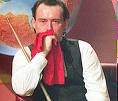This was posted on another site I haunt by a guy who's posts I respect, Pa(b)st Prime, and there are enough truths in it to justify a slow read 🙂
Few other fields have more published rules and guidelines than trading. After all, there's no Idiots Guide To Trial Defense. We've been inundated for decades with the old saws about cutting losses quickly and letting winners run. Still we see little improvement in the trading performance of most participants. Futures trading is truly a zero sum game.
Each night the Clearing House pays out the same amount of money it collects. Toss in commissions, charts, research and the endeavor quickly reaches negative expectancy. Since I began trading on the CBOT floor in 1982 much has changed. Electronic access, FIFO and lower commissions have vastly leveled the playing field between professionals and the rest of us. While technological advancements have made trading short term more appealing than a generation ago, in my view retail traders should consider trading less. In fact rather than enhancing returns and cutting risk most short term strategies only accentuate the losses associated with futures trading. Allow me to share with you some cautionary aspects and a bit of advice that could help you clear some preliminary hurdles.
Commissions:
One of the least talked about advantages of being an Exchange member are ultra low commissions. I'll let you in on a dirty secret. The most legendary floor traders would have been net losers if they'd been paying the same commission schedule as you. In the larger financial products it was very typical for a floor trader to trade 1000 contracts a day in hopes of making just $1000 a day in profits. Superstar traders like Tom Baldwin would trade 20,000 lots on a busy day. I'd wager that many of you who've suffered grave drawdowns in your futures account are gross positive! Think about the paradox. Profitable trading yet net losses.
If your trading style is of a scalping nature I have a couple of suggestions. If you're trading more than several hundred contracts a day then lease an exchange membership. I won't go into the details here but for larger traders a seat will cut your costs dramatically. If you choose to remain at the retail level then try trading an exchange or product with low fees. Eurex charges far less than U.S. Exchanges. If you must scalp in America then look at low fee products like Treasuries. Or if you want to scalp a non-fixed income product choose a market with a larger minimum tick size. Paying $4-5 a r/t to scalp markets with $5 tick size is nonsensical. Cutting transaction costs is one of your most viable edges.
Short Term Technical Trading: I'm going to be both emphatic and controversial. There's is no system based on short term indicators generating anything other than real time random performance. It's utterly naive to believe the next few ticks can be handicapped by a stale set of variable equations. Now I know some of you are thinking I'm out of touch. That's because you've just successfully back tested some esoteric system with divergences, crossovers and filters.
You're sure this new optimized system is gold.
Think again. First the obvious. The Goldman's, Morgan's and big bucks CTA's with their vast computing power and impeccable tick data have already tested every conceivable indicator under the sun. Even if you're onto something remotely consistent you'll be subject to all the problems of high frequency short term trading such as commission costs, unable price orders and slippage. Now here's the rub. There's many signals derived from longer term strategies that will produce quality short term trades. Which signal has a more reliable chance of generating short term follow through? A new 5 minute high or a new monthly high? As a technician doesn't it make better sense to monitor a wider array of markets and spot higher percentage opportunities then to "specialize" in a single market and take a series of weak signals derived from noise?
Trade The News:
One of the pretexts of technical analysis is the theory that news is already reflected in price. Nonsense. Markets are organic. Market moving institutional participants are constantly reevaluating their positions based on evolving perceptions of fundamental information. Think of the market as a basketball game. We're watching a half court offense methodically passing the ball around the perimeter in search of a high percentage shot. Suddenly an athletic defender intercepts the pass and runs down the court uncontested for a slam dunk. That defender's name is News and he can spoil even your most conservative plans. News often comes unannounced. News can be as subtle as a dry Sunday in July when perceptive traders figure out there's a potential drought and push futures to an up limit open on Monday. No matter how mechanical and detached your approach you'll be frequently confronted by decidingly anti-technical factors.
Position Sizing:
It only matters how much you bet. Too many times we've all made historic market calls only to take a small profit much too soon and then watch the market explode for weeks on end in the direction we anticipated Then the next time we try to milk a winning trade for a bit more and see our open profit evaporate. It seems that picking the markets direction is seemingly easier than extracting consistent profits. I preach two approaches. For folks who're reasonably well off and seeking more modest returns I suggest you vastly under trade. Practice with scaling out of winners along with a hard protective stops. Larger accounts should risk no more than 1-2% their equity on each trade. One can always save up an additional $5000 in trading capital but refunding an account with an extra million isn't as simple as moonlighting at your day job.
For smaller accounts I advocate a more wide open strategy. You're probably not going to double your account 12 consecutive times trading for 1 tick at a time. None of us are that good. What you can do however is hit an occasional home run. I'm not saying just let it rip without an uncle point but you must intelligently look for opportunities that'll give you a quantum leap in return. Unless you're still a teenager, compounding $5000 by 20% a year isn't going to be a life changing experience.
Learn About Options: Like futures themselves, options are increasingly traded electronically and have enjoyed tremendous surges in volume and liquidity. For small traders the ability to over leverage with a defined stop loss on equity is a boon to your big play potential. I'll give you a pertinent example. This past December I had strong resistance on the March e-mini S&P at 1511. I decided I wanted to risk $10,000 on a short position. Index futures margins would have allowed me to short just 2 futures.
A 100 point down move would in turn have resulted in a $10,000 profit ($50 per point x 2 contracts). Instead I bought $10,000 worth of put spreads with an expected 8-1 payoff if futures closed below 1400 at January expiration. Fortunately the trade worked and my 10k turned into a minor windfall of $80,000. Another advantage to long premium options trades is the ability to trade futures contrary to your options position. If you're long calls you can then be a natural seller of futures.
Often if you're in a rhythm you'll quickly pay the cost of your options with the proceeds from your gamma hedging. Accept Your Psychological Shortcomings: We're all flawed in one way or another. Discretionary traders in particular are subject to the pitfalls of poor trade selection, over trading, undefined risk tolerance and revenge trading. A movie actor can vacillate between bi-polar feelings of arrogance and guilt but what makes his foibles different than a traders is the simple fact that he gets paid no matter what. We will never trade perfectly but must attempt to at least minimize our natural self destructive impulses. Keep a journal of your trades.
Don't just mimic the information contained in your brokerage statement. Instead keep a log of you felt emotionally about each trade. Like me you'll find there's commonalities with many of your losses. For instance if I fail to take a signal that would've resulted in a big winner I'll invariably next act on a weak signal and often over trade it to boot. Doing nothing more than eliminating your "trouble spots" will save you money that can be dedicated to the next good setup you perceive.
Hopefully I'll have an opportunity to expand on these points in subsequent articles. Till then, best of trading and good health to all.
Pa(b)st Prime aka Kurt J. Eckhardt has been trading since 1982 when he began his career as an active floor trader in the CBOT Treasury Bond pit. Kurt is President of Eckhardt Research and Trading and its subsidiary Agility Trading. Agility offers both individuals and funds cutting edge technical strategies along with high performance instruction. You can find the original article at this link

